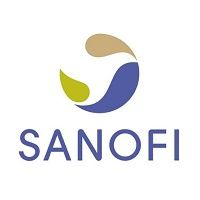Article
Dupilumab Hits Phase 3 Endpoints for Eosinophilic Esophagitis
Author(s):
The biologic has now shown significant efficacy in treating 4 different atopic or type 2 inflammatory diseases.

Dupilumab (Dupixent) has reached co-primary endpoints in a phase 3 trial assessing the biologic therapy in patients aged 12 years and older with eosinophilic esophagitis (EoE), investigators report.
In an announcement recently shared by Regeneron Pharmaceuticals and Sanofi, dupilumab became the first biologic to report positive, clinically-meaningful phase 3 results in treating pediatric and adult EoE symptoms and markers.
Investigators, having completed “Part A” of the trial, are now moving into the latter half of their assessment.
In the newest available data, investigators shared outcomes for 81 patients enrolled in the randomized trial, which sought co-primary endpoints of change from baseline in Dyshpagia Symptom Questionnaire (DSQ)—a score ranging from 0-82—and proportion of patients achieiving peak esophageal intraepithelial eosinophil counts of ≤6 eos/hpf at 24 weeks.
The endpoints indicate benefit in improved patient swallowing and rate of esophageal inflammation, investigators noted.
Patients with histological and patient-reported definitions of EoE, aged ≥12 years old, were split to either weekly dupilumab 300 mg (n = 42) or placebo (n = 39).
At 24 weeks, more than double the rate of dupilumab-treated patients (69%) reported reductions in disease symptoms as per DSQ than those on placebo (32%; P = .0002). Mean patient score improvement was 21.92 points for dupilumab, versus 9.60 for those on placebo (P = .0004).
Dupilumab-treated patients also reported a 60% reduction in esophageal eosinophilic count—a 12-fold greater mean reduction than placebo (5%; P <.0001). Mean baseline peak levels were 89 eos/hpf.
Additionally, abnormal endoscopic findings, measured by the EoE Endoscopic Reference Score (EoE-EREFS)—were exponentially greater in treated patients versus placebo—39% reduction versus 0.6% (P <.0001).
In assessing for safety, investigators observed a similar profile of dupilumab as noted in its previously observed and US Food and Drug Administration (FDA)-approved indications. At 24 weeks, overall adverse rates were 86% for dupilumab and 82% for placebo. Just one treated patient discontinued therapy, due to arthralgia.
Dupilumab was granted Orphan Drug Designation for the potential treatment of EoE—which is a rare disease known to affect fewer than 200,000 people in the US, and without many treatment options—in 2017. Earlier this week, the FDA approved the biologic for the treatment of moderate to severe atopic dermatitis in patients aged 6-11 years old—its fourth indication.
This makes the fourth atopic or type 2 inflammatory disease for which dupilumab has demonstrated significant efficacy, following asthma, atopic dermatitis, and chronic rhinosinusitis with nasal polyps, Regeneron co-founder, president, and chief scientific officer George D. Yancopoulos, MD, PhD, said.
These newest pivotal findings come for a patient population with a debilitating condition with no currently approved treatment options.
“These data are particularly impressive, as Dupixent not only dramatically reduced eosinophils in the esophagus, but also improved all clinical, anatomic and histologic measures of the disease,” Yancopoulos said in a statement. “In the past, EoE was thought to be a disease caused by eosinophils, but other biologics that decrease eosinophils in the esophagus did not demonstrate consistent clinical or anatomical improvements.”
Further details of the EoE findings will be presented at an upcoming medical meeting.




